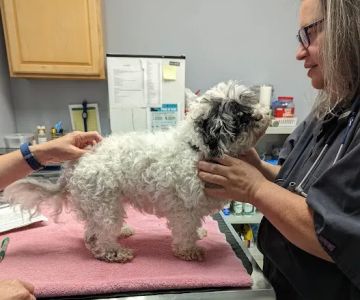Tips for Traveling with Pets Internationally
As a pet lover and frequent traveler, I’ve always been curious about the logistics of traveling with my furry friends. Over the years, I’ve traveled internationally with my dog and cat, and while it can be incredibly rewarding, it requires careful planning. Whether you're traveling for business or pleasure, taking your pet along on an international trip is a bit more complex than hopping on a plane solo. The experience can be stressful for both you and your pet if you're not well-prepared, but with the right knowledge and a solid plan, it can be a smooth and enjoyable adventure for everyone. In this article, I’ll share some practical tips and personal experiences to help you prepare for international travel with your pets.
1. Understand the Pet Travel Requirements of Your Destination
The first step in traveling internationally with a pet is understanding the specific requirements of the country you’re visiting. Each country has its own regulations when it comes to importing pets, and they can vary widely. I remember when I first traveled with my dog to the UK, I was surprised to learn that pets must have a rabies vaccination certificate, a microchip for identification, and a pet passport that includes a health declaration from an accredited vet. Some countries, like Australia and New Zealand, even have quarantine periods for pets.
Before booking your flight, take the time to research the pet travel requirements for your destination. This can include vaccination records, health checks, microchips, and specific paperwork that proves your pet is fit to travel. The last thing you want is to arrive at customs only to find that your pet is not allowed into the country due to missing documents. The airline you’re flying with should be able to provide a list of the requirements for specific countries as well. I found this information to be essential for ensuring a smooth arrival and avoiding last-minute stress.
2. Visit the Vet and Get Your Pet Ready for Travel
One of the most important steps before traveling internationally with your pet is scheduling a visit to the vet. I always make sure to get a health checkup for my pets at least a few weeks before the trip. Depending on the country you're traveling to, your pet may need specific vaccinations or treatments such as flea prevention or deworming. For example, when I traveled to Europe with my dog, I had to ensure that she had the correct vaccinations and treatments within a specified time frame.
It’s also a good idea to ask your vet for advice on calming your pet during the flight. Some pets experience anxiety, and traveling can be overwhelming for them. For my dog, I used a calming collar, and for my cat, I tried pheromone sprays that helped her relax during the trip. Be sure to get a copy of all your pet’s medical records, including vaccination certificates, health check-up records, and proof of microchipping. This documentation will be necessary for both customs and any unexpected situations that may arise during travel.
3. Choose the Right Pet Carrier or Travel Crate
Choosing the right carrier or crate is crucial for ensuring your pet’s safety and comfort during the journey. I’ve learned from experience that not all carriers are suitable for international travel, especially when it comes to airline regulations. Each airline has specific guidelines regarding the size and type of pet carriers they accept, and this can depend on whether your pet is traveling in the cabin or in the cargo hold.
When I first traveled with my dog, I chose a soft-sided carrier for her to travel in the cabin with me. The carrier was the right size for under-seat storage, and it allowed her to remain calm and comfortable during the flight. For my cat, I found a hard-sided carrier with proper ventilation and a secure door to ensure her safety in the cargo hold. Some airlines also allow pets to travel in the cabin, provided they meet weight restrictions, so it’s important to confirm these details in advance. Make sure your pet is used to the carrier before the trip, allowing them to feel more comfortable and familiar with their temporary home for the duration of the flight.
4. Prepare for the Flight and Keep Your Pet Comfortable
Once you have your carrier sorted, the next step is preparing for the flight itself. International flights can be long, and your pet may need to stay in their carrier for several hours. I always pack a few essential items in my pet’s travel bag to make sure they’re comfortable during the flight. Some items I pack include a small blanket, a portable water bottle, food or treats, and any necessary medications.
During the flight, I make sure to stay as calm as possible to keep my pets relaxed. Pets are very attuned to their owners' emotions, so I try to maintain a calm demeanor and reassure them when needed. I also try to keep the cabin air fresh by using pet-friendly air fresheners, and if my pet is in the cargo hold, I confirm with the airline that the temperature and air circulation are suitable for their comfort.
5. Consider the Potential Stress and Take Care of Your Pet’s Well-being
Traveling internationally can be stressful for both you and your pet, so it’s important to consider their well-being throughout the journey. From my own experiences, I’ve learned that the stress of traveling doesn’t stop once the plane lands. Pets may feel disoriented or anxious after being in a confined space for such a long period of time. I always make sure to give my pets time to acclimate to their new environment after arrival, whether that’s through quiet bonding time, a relaxing walk, or some playtime to release their pent-up energy.
If your pet has anxiety or a medical condition, consider consulting with your vet about ways to reduce stress during travel. Some pets may benefit from medications or calming supplements to help them relax. I’ve used natural calming aids for my pets, and while it’s always best to consult a vet, these products can make a noticeable difference in how your pet reacts during the journey. Be sure to also check in with the local vet upon arrival to ensure your pet is healthy and adjusted to the new surroundings.
6. After Arrival: Settle In and Enjoy Your New Adventure
Once you arrive at your destination, it’s important to give your pet some time to adjust. I always make sure that my pets are settled into their temporary home as soon as possible, whether it’s a rental apartment, hotel, or vacation home. This helps them feel safe and secure in an unfamiliar environment. I also keep their favorite items, such as their blanket or toy, with them to provide comfort during the transition.
Exploring a new destination with a pet can be an incredibly rewarding experience. During my travels, I’ve found that having my pets with me often enhances the adventure. Whether it’s exploring a park, enjoying outdoor cafes, or relaxing in a new setting, traveling with my pets has made the experience more enjoyable. The key to success is thorough preparation, ensuring your pet’s comfort, and being patient as they adjust to the new environment.











